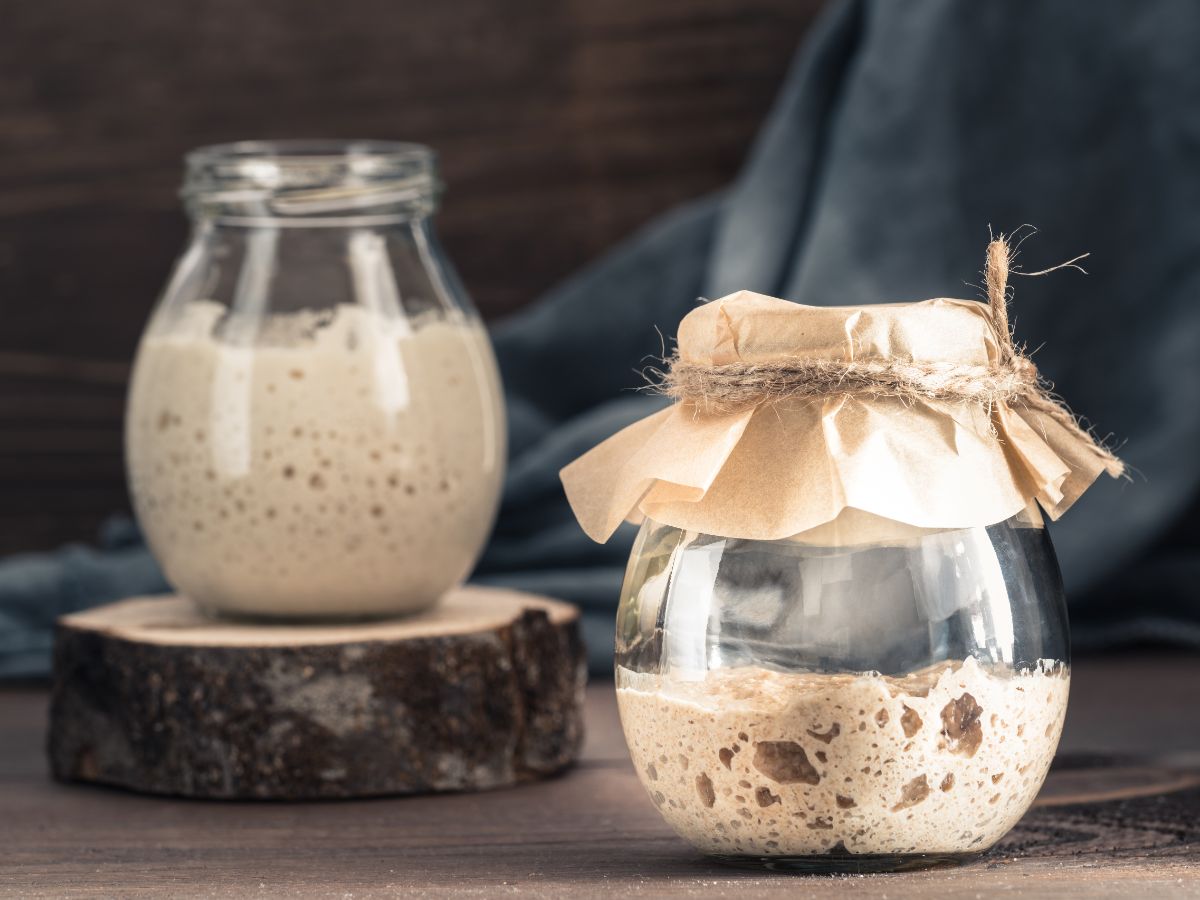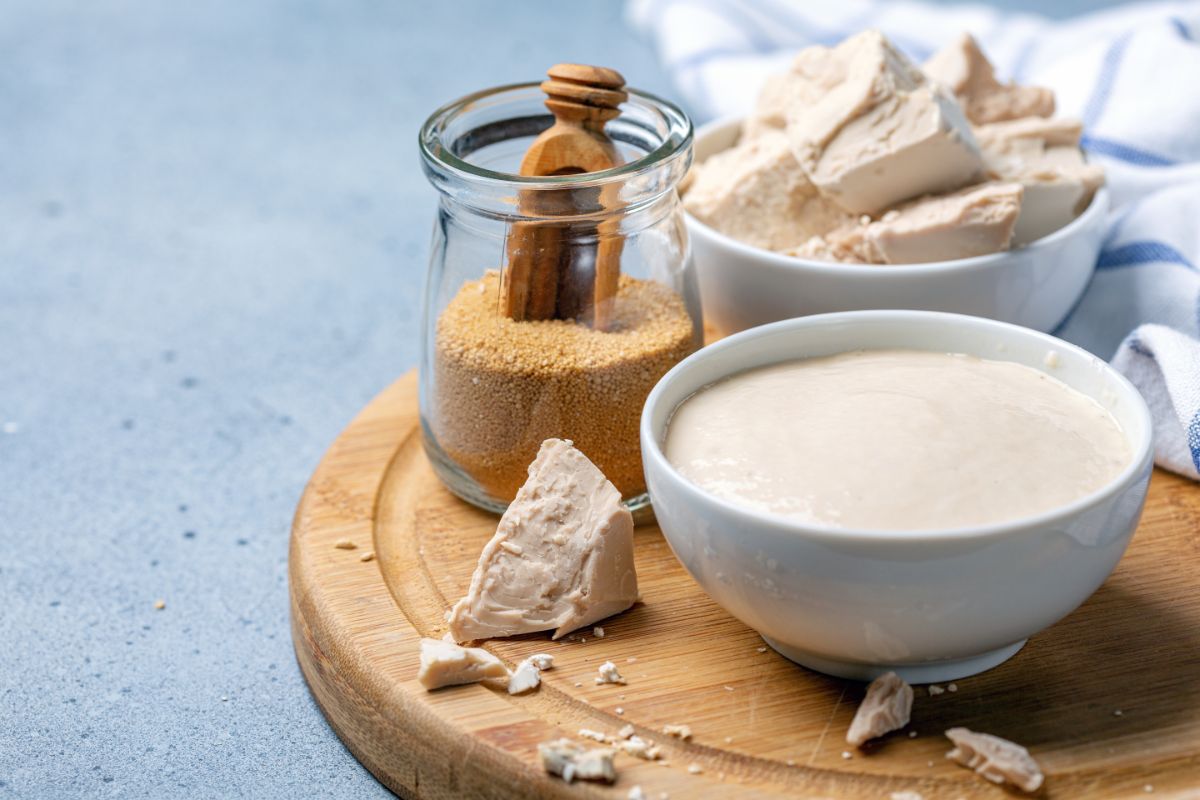How do I know if my yeast is still active? The common method is proofing it. Unfortunately, people often make mistakes proofing it. We’ll explain how to properly test yeast and the mistakes people make that kill it.

Dry yeast is hibernating. It has to be activated to prove that it is still active and capable of creating the airy loaves we expect when baking bread.
You can activate the yeast to get the desired effect while baking, and you can “proof” the yeast to verify it is working before you add it to the bread dough.
You were by definition proving that the yeast was good.
This article may contain affiliate links. As an Amazon Associate, I earn from qualifying purchases. Please take that into account.
- Dutch oven
- Large mixing bowl
- Measuring cups and spoons
- Bread thermometer (fancy or a budget one)
- Scoring lame
Extra (nice to have):
- Kitchen scale
- Dough scraper and bowl scraper (yes, they are different)
- Cooling rack
- Baking stone (you don’t need a dutch oven if you use this)
👉Learn how to make bread and pizza with this awesome book.
How do you activate yeast?
You should mix in a small amount of warm water into the yeast to activate it. Don’t use boiling water – that will kill it. Note that water too cold will fail to activate the yeast, too. If you use cold tap water, the yeast won’t activate.
Give the yeast a minute or two to sit at room temperature before you mix the water into the yeast. Gently do so until the yeast is dissolved in the water. Don’t add more water to activate the yeast than the recipe calls for, or you’ll reduce the yeast’s effectiveness.
Do I have to activate all types of yeast?
No. It isn’t necessary to activate instant yeast, only active dry yeast. Instant yeast can just be mixed in with the dry ingredients. You’ll know if that yeast is inactive if it fails to work. If the yeast “proofs”, then you know it is good.
What is proofing the yeast?
Proofing the yeast is when you let it metabolize the sugar and propagate. This takes at least a minute or two, but it can take up to ten minutes.
If it generates an airy foam, you know it is working properly. It is at this point you can add the yeast solution to the rest of the recipe.
Why do people proof yeast?

It can take hours to make a loaf of bread. You don’t want to waste your time by adding dead yeast to it. You can eat the accidental flatbread, but that will fall short because it wasn’t what you were planning on making.
Do I have to add sugar and salt to activate the yeast?
You can add a pinch of sugar to help activate the yeast. Do not add salt to the yeast at this stage, or you risk killing it.
If you don’t have sugar, you can add a pinch of flour to help feed the yeast. Don’t add sugar substitutes, since this won’t nourish the yeast and could kill it. The yeast needs a food source like sugar to grow.
What is the right way to proof yeast?
If you have a quarter ounce packet of yeast, you prove the yeast is alive by adding it to a quarter cup of warm water. Warm up the water before you add the yeast so you don’t kill the yeast by adding heat to the water while the yeast is in it.
Once you add the yeast, add a teaspoon of sugar or molasses. Within ten minutes, the mix should be bubbling or foaming. This proves the yeast is alive.
You can add this mixture to your recipe. Just reduce the water that needs to be added by the quarter cup of water you used in the proofing process.
How else can I determine if yeast is stale?
One way to determine if yeast is stale is to sprinkle a little over warm water. This water needs to be warm enough to activate it but not hot enough to kill it. Sprinkle some sugar over the yeast.
Don’t mix the sugar with the yeast. Cover the container and wait ten minutes. When you uncover it, active yeast will create bubbles in the water. If the yeast is stale and dead, the yeast will sink to the bottom of the container.
I proofed my yeast but the bread didn’t rise. What happened?
The yeast needs the right environment to do its work. If you didn’t give the bread dough enough time to rise, it won’t be as fluffy as expected. The dough needs an hour or two to rise.
And fast-acting yeast won’t change this time frame very much. If you didn’t mix or knead the dough sufficiently, you won’t move the yeast around enough to get the light, airy loaf you expected.
Does the expiration date tell me when the yeast is dead?
Yeast isn’t like eggs or sugar. It won’t go bad. It will just die. If the yeast is well past its expiration date, it is probably dead. However, freezing yeast will make it last almost indefinitely. In this case, you’ll restart the clock when you thaw out the yeast.
What if the yeast is only partially active?
Yeast is a living organism. If it starts to bubble when you “proof” it but not as much as you expect, feed it some sugar and wait. The surviving yeast will multiply. After all, that’s what it will do once it is mixed in with the bread.
If the yeast is close to expiring or you used water near the 110 degrees Fahrenheit limit, you may have to wait twenty minutes for the surviving yeast to create a frothy mix. Once you have a good froth, mix the yeast in with the dough.
If you don’t see any foam, add another packet of water to the mix and see what happens.
Why might the bread fail to rise like expected?
One possibility is that the yeast is dead. That’s why people “proof” or prove the yeast is good before mixing it into the rest of the ingredients.
If the yeast was killed during the mixing process, such as when you add salt right after adding the yeast, that will prevent the yeast from causing the bread to rise.
Not giving the yeast enough food or time to work can make it seem like the yeast is dead.
If the bread dough isn’t protected from drafts and kept at the right temperature for the one to two hours it needs to rise, which can prevent the bread from rising as much as you expected.
